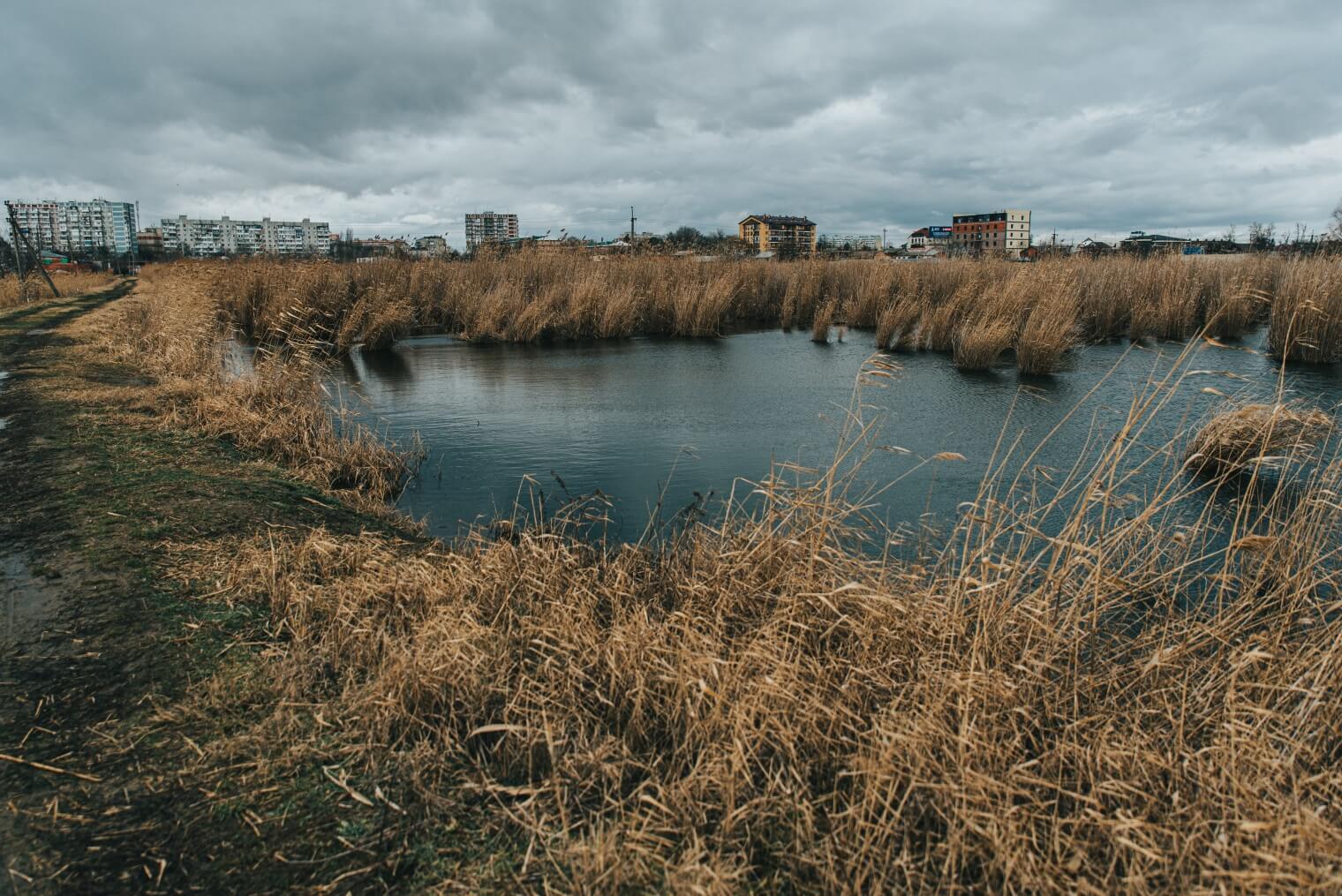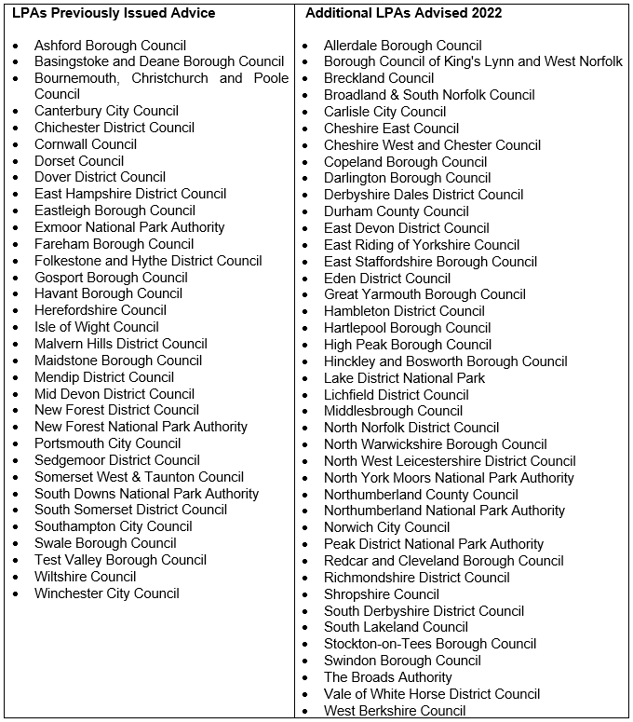
Published date: 06 May 2022
Nutrient Neutrality Guidance: May 2022 Update
Natural England has recently issued updated advice and support to Local Planning Authorities (LPAs) on nutrient pollution and measures to mitigate it.
This updated nutrient neutrality advice has also expanded to more protected sites and LPAs, and will have an immediate impact on planning applications and appeals in affected areas. The NHS Property Service town planning team has prepared a summary of the guidance, and outlined the mitigation options that NHSPS can support our customers on.
This guidance provides updated advice on ‘Nutrient Neutrality’ issued by Natural England and should be read in conjunction with our previous Nutrient Neutrality Guide (Published June 2020).
Background
In a written ministerial statement on 16th March 2022, George Eustice (Environment Secretary) stated that “Natural England has today issued updated advice and support to the 32 Local Planning Authorities currently affected by nutrient pollution, as well as 42 new LPAs.”
Local Planning Authorities (LPAs) have been advised that planning applications and Local Plans affecting habitats sites in an ‘unfavourable condition’ should be carefully considered and mitigation should be used to ensure that there are no adverse effects to meet the requirements of the Conservation of Species and Habitats Regulations 2017 (as amended). The advice will have an immediate impact on planning applications and appeals in affected areas.
Natural England previously issued this advice to 32 LPAs including those in Solent region, as well as in Kent, Herefordshire, Somerset, and Cornwall.
Extended Coverage
Natural England has now identified a further 20 protected sites, which are adversely impacted by nutrient pollution. An additional 42 LPAs have now been advised that their areas are affected by the updated nutrient neutrality advice. Bringing the total number of affected LPAs to 74 (up from 32).
Notably, the advice applies to specific water catchment areas, so whilst an LPA might be affected, the advice may not cover the whole administrative area. This can be reviewed on a case-by-case basis.
A Department for Environment, Food & Rural Affairs (DEFRA) Policy Paper, ‘Nutrient pollution: reducing the impact on protected sites’ (published 16th March 2022) states that, “different LPAs are affected to different degrees – some will have only a small fraction of their area affected and others will be impacted to a much larger extent.”
A full list of affected LPA areas are included below (table 1), and a national map of affected water catchment areas is included at appendix 1.
Table 1: Full list of affected Local Planning Authority Areas.

Calculation
To achieve nutrient neutrality, a nutrient budget is calculated using quantities of nitrogen (N) generated by a development. Measured N concentrations vary according to exactly what is measured and "the key measurement is Total Nitrogen (TN), i.e., both organic and inorganic forms of nitrogen, because this is what is available for plant growth."
TN is the sum of:
- the inorganic forms - nitrate-nitrogen (NO3-N);
- nitrite-nitrogen (NO2-N);
- ammoniacal – N; and
- organically bonded nitrogen
The Advice confirms that at the HRA (Habitats Regulation Assessment) 'appropriate assessment' stage "a nutrient budget [should be] calculated according to this methodology and demonstrating nutrient neutrality is, in our view, able to provide sufficient and reasonable certainty that the development does not adversely affect the integrity [(AEoI)], by means of impacts from nutrients, on the relevant internationally designated sites." Full details of the calculation methodology are provided in the Advice but will not be repeated here.
Mitigation Options
In the event that there is nitrogen surplus as a result of the calculation, direct or indirect mitigation can be applied to achieve nitrogen neutrality. The Advice confirms that:
"Mitigation can be ‘direct’ through upgrading sewage treatment works and through alternative measures, e.g., interceptor wetlands; or ‘indirect’ by taking land out of high nitrogen uses, e.g., crops or intensive livestock systems that result in an excess of nitrogen lost to the water environment."
Given the common lack of means for direct mitigation through NHS Property Services (NHSPS) development applications (site size, viability etc), the indirect route (via off-site mitigation) is anticipated to be the route taken in most cases.
Any off-site mitigation must be adequately ‘secured.’ A common approach currently being taken by LPAs is to identify mitigation sites and enter into section 106 agreements with the landowner to ensure that the mitigation development lasts for an adequate period (80+ years) and is established to provide sufficient offsetting of nitrogen leakage. As a developer, NHSPS can buy credits in these secured off-site schemes to mitigate their own nitrogen output and ensure nitrate neutrality. This can, in some cases, include the mitigation schemes in different LPA areas, provided it serves the same catchment area.
Summary
The total number of LPAs affected by Natural England’s neutrality advice has more than doubled across the UK (from 32 to 74 LPAs) after Natural England has identified a further 20 protected sites, which are adversely affected by nutrient pollution.
The Government has recently announced a series of practical, financial, and legislative measures to help address the issue of those LPAs affected by nutrient pollution, which can be read in the DEFRA Policy Paper ‘Nutrient pollution: reducing the impact on protected sites.’
In addition to Natural England’s Advice, a Press release ‘Delivering on the Environment Act: new targets announced and ambitious plans for nature recovery,’ and a letter from Chief Planner Joanna Averley ‘Nutrient Pollution: Neutrality, Support And Funding,’ were published in March 2022.
The full legislation for the Conservation of Species and Habitats Regulations 2017 (as amended) can be read here.
Further details can be read on the Planning Advisory Service (PAS) website.
NHSPS needs to ensure a consistent approach in dealing with this matter on all planning applications – in particular the approach to calculating baseline conditions.
This is a general guide only and is not intended to be comprehensive or a substitute for taking detailed professional advice. No liability is accepted for the information it contains or any errors or omissions.
If you are dealing with a site which may be impacted by this issue, or for further advice on what these changes mean for an NHSPS site, please contact the town planning team via Aahsan.Rahman@property.nhs.uk or Town.Planning@property.nhs.uk
Town Planning for the NHS
As the only dedicated and professional town planning team in the NHS, we offer specialist town planning advice for our customers and the wider NHS. This includes supporting planning appraisals and applications, protecting NHS rights to our buildings, and monitoring and responding to emerging planning policies.





